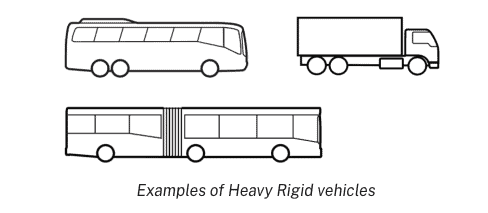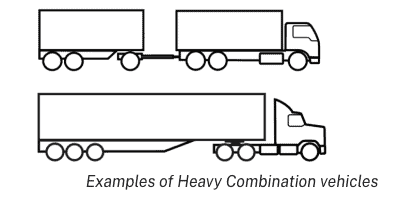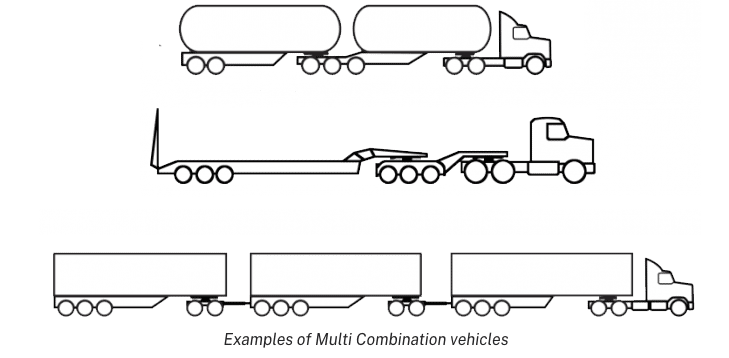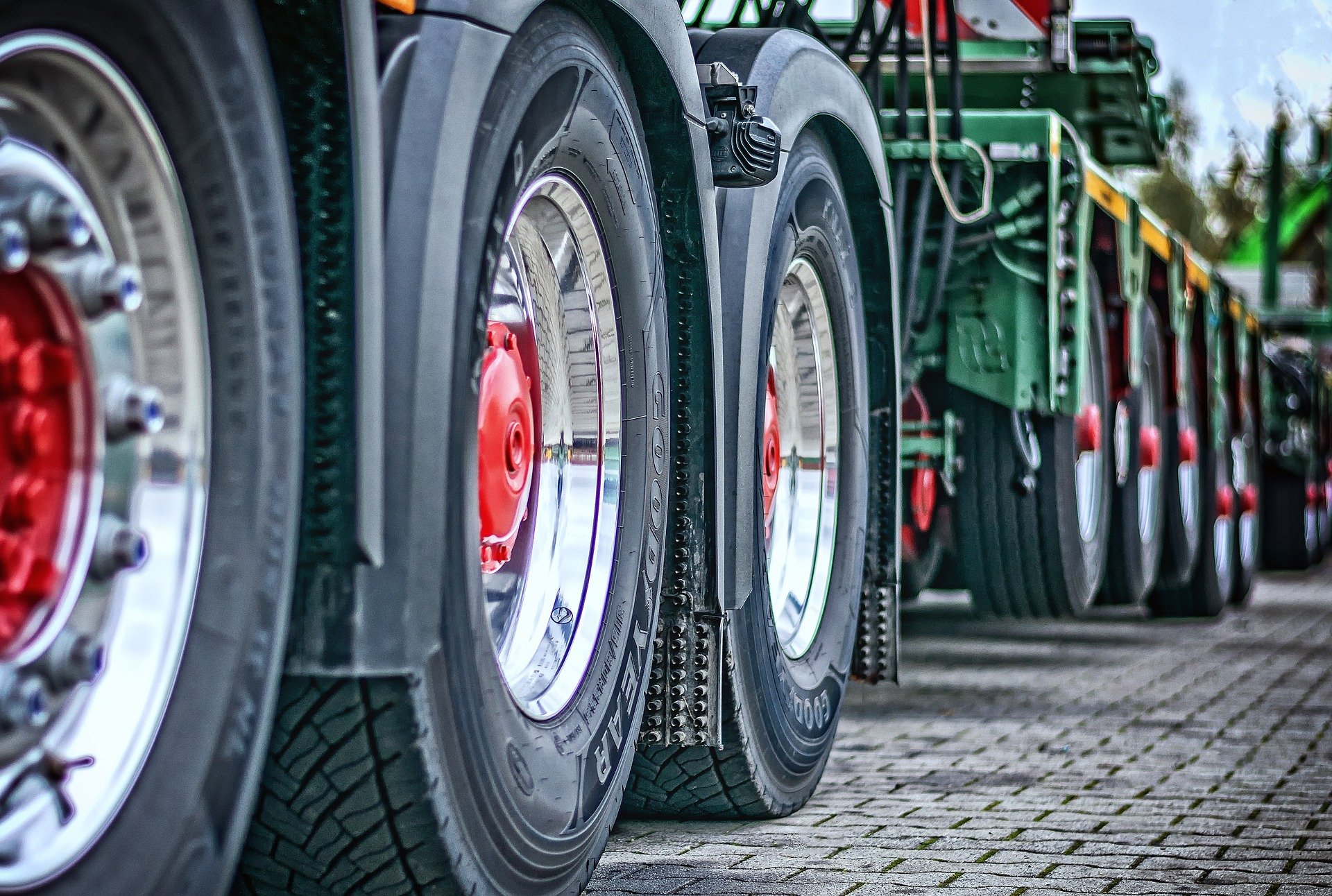Want to be a heavy vehicle driver? Here's how to get a licence.
If you’re planning on driving a heavy vehicle in NSW, you’ll need a heavy vehicle driver licence. But before you can get your hands on one, there are key things to know about getting a heavy vehicle licence in the State.
Which Of These Heavy Vehicle Licences Do I Need?
If you are applying for a heavy vehicle licence, there are 2 ways to get it. This depends on where you live, and which class of licence you’re applying for.
To get the licence, you must first pass a heavy vehicle knowledge test for the class of heavy vehicle licence you’re after. Once that’s done, you can then determine which test or assessment you need to take.
The primary way to obtain a heavy vehicle licence is by completing an HVCBA (Heavy Vehicle Competency Based Assessment) with a Registered Training Organisation (RTO). If you’re applying for a Multi Combination (MC) class licence, you must complete the HVCBA.
In areas where the HVCBA is not available, you can take a heavy vehicle driving test with a Service NSW testing officer.
Heavy Vehicle Licence Classes In Australia
To upgrade your heavy vehicle licence class, you must meet the minimum requirements for each class in this list. The requirements vary depending on the licence class.
LR – Light Rigid – small buses or trucks.
MR – Medium Rigid – medium rigid trucks or buses.
HR – Heavy Rigid – heavy rigid trucks or buses (including articulated buses).
HC – Heavy Combination – heavy articulated vehicles.
MC – Multi Combination – B-doubles, prime mover, low loader dolly and low loader combinations, road trains.
You can also drive vehicles covered by a lighter licence class (all those that are above your licence class in this list). This does not include motorcycles.
Heavy Vehicle Licence Class Requirements
LR – Light Rigid Licence
Light Rigid vehicles are classified as those with a gross vehicle mass of up to 8 tonnes. These include:
* small trucks with a GVM up to 8 tonnes and any towed trailer that does not weigh more than 9 tonnes GVM
* buses that seat more than 12 adults, including the driver, and have a GVM up to 8 tonnes.
If you’ve held a class C licence (except a learner licence) or equivalent for at least 1 year, you can apply to upgrade to an LR licence. You must pass the Heavy Vehicle Knowledge Test, pass an eyesight test, and successfully complete either the Heavy Vehicle Competency Based Assessment (HVCBA) or a heavy vehicle driving test.

What types occupations require a LR – light rigid truck licence?
If you’re looking for a job that involves getting behind the wheel of a small truck, minibus or even a courtesy bus, you’ll need to get an LR licence.
An LR licence is a legal requirement for anyone driving a minibus or small truck. An LR licence lets you work as a delivery driver, a removalist, or a small courtesy buses driver. If you plan to drive a minibus with other people on board, you will also need to complete the Bus Driver Authority course.
An LR licence will open up many different career opportunities including:
Delivery driver
Removalist
Courtesy bus driver
MR – Medium Rigid Licence
It allows you to drive vehicles with a Gross Vehicle Mass (GVM) of more than 8 tonnes and 2 axles. You must hold an MR licence to drive any vehicle that has been converted to carry more than 9 tonnes GVM, including trucks, buses, trailers and combinations of vehicles.
To apply for an MR licence, you must:
1. Have held a class C licence (except a learner licence) or equivalent for at least one year.
2. Pass the Heavy Vehicle Knowledge Test.
3. Pass an eyesight test (you may be asked to undergo this test again if you lose your licence).
4. Successfully complete the HVCBA or pass a heavy vehicle driving test.

What types occupations require a MR – Medium rigid truck licence?
The MR Licence is a flexible licence that allows you to drive medium rigid trucks. This means that you can take on a wide range of jobs, from driving school buses and tow trucks, to delivery drivers and tradies.
Most jobs that require an MR Licence fall into the delivery and bus driver demographics. From jobs with major courier companies such as TNT, right through to driving school buses and tow trucks, the MR Licence keeps your options more open.
HR – Heavy Rigid Licence
There are a number of vehicles that fall under the HR category, including:
-Trucks and buses with a GVM more than 8 tonnes, and 3 or more axles.
-Any towed trailer must not weigh more than 9 tonnes GVM.
-Bendy buses. Even though these vehicles are articulated, they’re treated as rigid vehicles.
To apply for an HR licence, you must:
Hold a class C licence (except a learner licence) or equivalent for 2 years or more.
Pass the Heavy Vehicle Knowledge Test.
Pass an eyesight test.
Succeed at the HVCBA or take a heavy vehicle driving test.

What types occupations require a HR – Heavy Rigid Truck Licence?
A HR – Heavy Rigid truck licence is required for a number of occupations, including:
-Dangerous Goods Transport
-Fuel-Tanker Driver
-Bus or Coach Driver
-Waste removal (garbage/recycling truck)
-Construction/Mining
-General Freight (eg removalist)
HC – Heavy Combination Licence
If you hold a class MR or HR licence or equivalent for 1 year or more, you can apply for an HC licence. The HC licence is for heavy rigid vehicle trailer combinations including unladen dolly with 3 or more axles, articulated vehicles with 3 or more axles, and any towed trailer with a GVM more than 9 tonnes. Examples include: Prime Movers with a single trailer, Semi-Trailers, Floats, Low loaders, Pig trailers,Truck and Dogs
To apply for an HC licence, you must:
Have held a class MR or HR licence or equivalent for 1 year or more
pass the Heavy Vehicle Knowledge Test
pass an eyesight test
successfully complete the HVCBA or pass a heavy vehicle driving test.

What types occupations require a HC – Heavy Combination Truck Licence?
If you are in the transport industry, you need a Heavy Combination Truck Licence.
A Heavy Combination Truck Licence (HC) is a standard requirement for most companies in the road freight industry. This includes companies like TOLL, Linfox, TNT, DHL and various other leaders in the industry.
If you are a Quarry and need to drive a Truck and Dog, Wanting to build a career in the transport industry or Need to drive a truck with a 2 axle trailer that is more than 9t GVM for any reason then getting an HC licence is your best option!
MC – Multi Combination Licence
If you’re ready to drive the biggest and best trucks on the road, an MC licence is what you need. The MC licence allows you to drive all types of vehicles, except motorcycles.
MC vehicles include:
-B-doubles
-prime mover, low loader dolly and low loader trailer combinations
-road trains.
To apply for an MC licence, you must:
-have held a class HR or HC licence or equivalent for at least 1 year
-pass the Heavy Vehicle Knowledge Test
-pass an eyesight test
-successfully complete the HVCBA. If you hold an HR licence, you’ll need to pass an HC assessment before you can start MC training
-pass a medical assessment

What types occupations require a MC – Heavy Combination Truck Licence?
Occupations that require a MC – Heavy Combination Truck Licence include:
– Truck drivers
– Transport industry workers
– Truck mechanics
This type of licence is particularly suitable for people involved in the transport industry, or looking to become involved in the transport industry.
To sum things up, heavy vehicle licensing isn’t a difficult process in NSW for beginners. But it does have its complexities and finer details. In order to have a smooth experience, you need to know the ropes. The tips above should provide you with ample information on how to get around the licensing process, so that the rest of your journey is smoother. Good luck!
Dedicated To Your Driver Safety
AOTA
